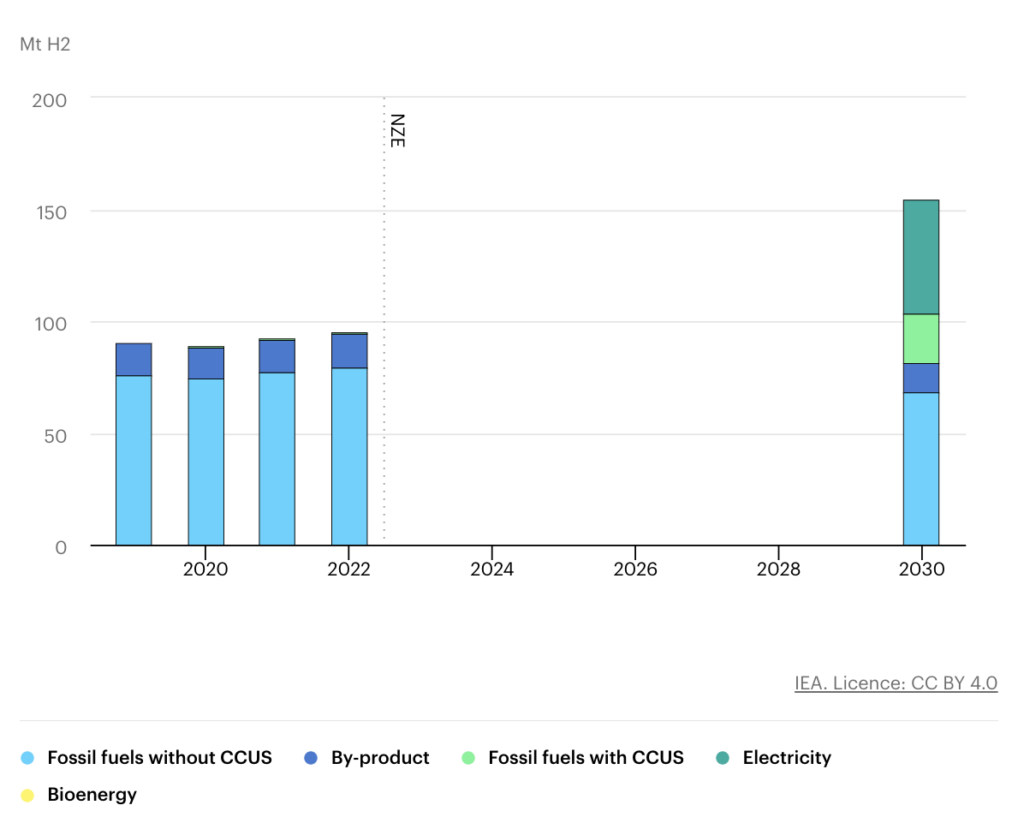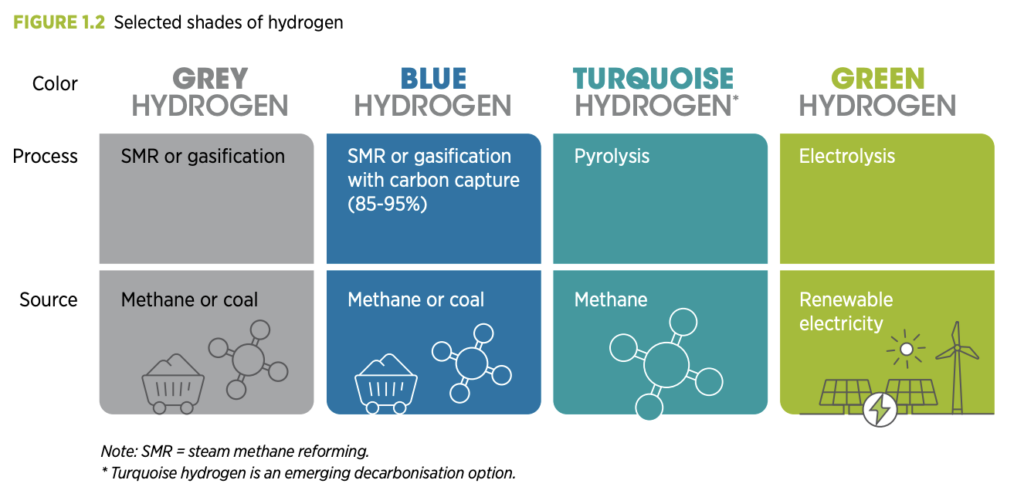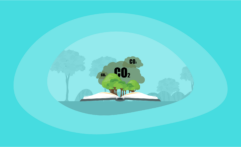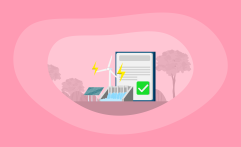The History of Hydrogen: The Big Picture
Affiliate Disclosure
Hey fellow impactful ninja ?
You may have noticed that Impactful Ninja is all about providing helpful information to make a positive impact on the world and society. And that we love to link back to where we found all the information for each of our posts.
Most of these links are informational-based for you to check out their primary sources with one click.
But some of these links are so-called "affiliate links" to products that we recommend.
Why do we add these product links?
First and foremost, because we believe that they add value to you. For example, when we wrote a post about the environmental impact of long showers, we came across an EPA recommendation to use WaterSense showerheads. So we linked to where you can find them. Or, for many of our posts, we also link to our favorite books on that topic so that you can get a much more holistic overview than one single blog post could provide.
And when there is an affiliate program for these products, we sign up for it. For example, as Amazon Associates, we earn from qualifying purchases.
What do these affiliate links mean for you?
First, and most importantly, we still only recommend products that we believe add value for you.
When you buy something through one of our affiliate links, we may earn a small commission - but at no additional costs to you.
And when you buy something through a link that is not an affiliate link, we won’t receive any commission but we’ll still be happy to have helped you.
What do these affiliate links mean for us?
When we find products that we believe add value to you and the seller has an affiliate program, we sign up for it.
When you buy something through one of our affiliate links, we may earn a small commission (at no extra costs to you).
And at this point in time, all money is reinvested in sharing the most helpful content with you. This includes all operating costs for running this site and the content creation itself.
What does this mean for me personally?
You may have noticed by the way Impactful Ninja is operated that money is not the driving factor behind it. It is a passion project of mine and I love to share helpful information with you to make a positive impact on the world and society. However, it's a project in that I invest a lot of time and also quite some money.
Eventually, my dream is to one day turn this passion project into my full-time job and provide even more helpful information. But that's still a long time to go.
Stay impactful,
Hydrogen is the most abundant element in the universe and can be a clean-burning, zero-emission fuel that many believe could play a substantial role in combating climate change. So, we had to ask: What is the history of hydrogen?
Hydrogen (H2) energy began in the 1600s with the first H2 experiments and the recognition of H2 as an official element. Then, electrolysis was discovered and the fuel cell was invented in the 1800s. H2 energy has not yet entered the mainstream energy industry due to various barriers.
Keep reading to learn how hydrogen came to be, who and what pioneered its development, how effective it has been thus far, and what the future of hydrogen could entail.
Here’s the History of Hydrogen in a Nutshell
Hydrogen (hydrogen) is a colorless, odorless, tasteless, flammable gas and is the most abundant element in the universe.
“Hydrogen: a chemical element that is the lightest gas, has no color, taste, or smell, and combines with oxygen to form water”
Cambridge Dictionary
Hydrogen can be a source of clean energy because it emits zero carbon dioxide (CO2) when combusted if sourced via the electrolysis of renewable resources (i.e. solar and wind). The energy stored in hydrogen gas can also be used as a clean-burning fuel in various modes of transportation.
Hydrogen has gone through three distinct development phases in its development:
- Early market formation and innovation: The early history of hydrogen dates back to the 1600s with the first hydrogen experiments, the recognition of hydrogen as an official element, and the discovery of the electrolysis process.
- Consolidation and strengthening: Following the discovery of the electrolysis process in 1800, the invention of the hydrogen fuel cell kickstarted the hydrogen energy industry and led to the development of many different hydrogen-powered technologies including automobiles, trains, aircraft, and boats.
- Mainstreaming: Hydrogen has yet to establish itself as a mainstream energy source. Although political momentum backing hydrogen energy remains strong, deployment of hydrogen technologies has remained relatively stagnant due to high upfront costs and technological barriers.
| Hydrogen Milestones | Historical Event |
| Initial start | The early history of hydrogen dates back to the 1600s with the first hydrogen experiments, the recognition of hydrogen as an official element, and the discovery of the electrolysis process. |
| Milestones in hydrogen development | 1800: William Nicholson and Sir Anthony Carlisle discovered the process of electrolysis by applying electric current to water, thereby generating hydrogen and oxygen gasses. This discovery would become the basis of how we generate green hydrogen today. 1842: William Grove invented the world’s first hydrogen fuel cell by combining hydrogen and oxygen to produce electricity and water. 1966: General Motors introduced the Chevrolet Electrovan, the world’s first road vehicle powered by hydrogen fuel cells. 2002: The world’s first hydrogen-powered, mining locomotive was introduced in Quebec. 2004: DeepC, the world’s first hydrogen-powered, autonomous underwater vehicle (UAV) was launched. 2009: The Italian company Enel opened the world’s first power plant fueled by 100% hydrogen, the Fusina Hydrogen Power Station. 2017: The Hydrogen Council, a global initiative to advance hydrogen energy as a key player in the clean energy transition, was formed at the World Economic Forum. 2019: Alaka’i Technologies launched Skai, the world’s first hydrogen-powered aircraft. 2020: Belgian shipping company Compagnie Maritime Belge partnered with the port of Antwerp to develop HydroTug, the world’s first hydrogen-powered tugboat. 2022: The world’s first international shipment of liquified hydrogen took place between Australia and Japan via the Hydrogen Energy Supply Chain (HESC) project. It is the first in the world to extract, liquefy, and transport liquid hydrogen by sea to an international market. 2023: The world’s first hydrogen-powered ferry became operational in Norway. 2023: The world’s first underground hydrogen storage facility became operational in Austria. |
| Current status | Currently, most of the hydrogen we produce is gray hydrogen that comes from fossil fuels, specifically natural gas. Green hydrogen produced from renewable energy accounts for less than 1% of total hydrogen production. The US and the EU lead the world in terms of hydrogen energy policy, whereas China leads the way in terms of deploying hydrogen energy technologies. |
| Future outlook | The future of hydrogen energy will be heavily influenced by the establishment of regulations and certification methods, international cooperation, technological advancements, and decreasing costs of hydrogen energy. Political momentum backing hydrogen energy remains strong; however, deployment of hydrogen technologies has remained relatively stagnant. |
| Key policy developments | 1974 – International Energy Agency (IEA) 2009 – The International Renewable Energy Agency (IRENA) 2015 – Paris Climate Agreement 2017 – Hydrogen Council 2021 – EU Clean Hydrogen Partnership The Accelerating Clean Hydrogen Initiative |
Understanding hydrogen energy’s history can provide insight into how it has developed into the energy source it is today.
When and How Did Hydrogen Get Started
The early history of hydrogen energy dates back to the 1600s when hydrogen was first produced by Robert Boyle around 1671. Hydrogen wasn’t officially recognized as an element until 1766 when English physicist Henry Cavendish became the first to produce hydrogen gas by dissolving metals in acids.
How Has Hydrogen Developed Over Time
Hydrogen can play an important role in the global energy transformation and help the transition away from fossil fuels because it is a clean-burning energy source when sourced from renewable energy sources.
What Are Milestones in Hydrogen Development
The discovery of the electrolysis process and the invention of the hydrogen fuel cell in the 1800s kickstarted the hydrogen energy industry and led to the development of many different hydrogen-powered technologies including automobiles, trains, aircraft, and boats.
1800: English scientists William Nicholson and Sir Anthony Carlisle discovered the process of electrolysis by applying electric current to water, thereby generating hydrogen and oxygen gasses. This discovery would become the basis of how we generate green hydrogen today.
1842: William Grove invented the world’s first hydrogen fuel cell by combining hydrogen and oxygen to produce electricity and water.
1966: General Motors introduced the Chevrolet Electrovan, the world’s first road vehicle powered by hydrogen fuel cells.
2002: The world’s first hydrogen-powered, mining locomotive was introduced in Quebec.
2004: DeepC, the world’s first hydrogen-powered, autonomous underwater vehicle (UAV) was launched.
2009: The Italian company Enel opened the world’s first power plant fueled by 100% hydrogen, the Fusina Hydrogen Power Station.
2017: The Hydrogen Council, a global initiative to advance hydrogen energy as a key player in the clean energy transition, was formed at the World Economic Forum.
2019: Alaka’i Technologies launched Skai, the world’s first hydrogen-powered aircraft.
2020: Belgian shipping company Compagnie Maritime Belge partnered with the port of Antwerp to develop HydroTug, the world’s first hydrogen-powered tugboat.
2022: The world’s first international shipment of liquified hydrogen took place between Australia and Japan via the Hydrogen Energy Supply Chain (HESC) project. It is the first in the world to extract, liquefy, and transport liquid hydrogen by sea to an international market.
2023: The world’s first hydrogen-powered ferry became operational in Norway.
2023: The world’s first underground hydrogen storage facility became operational in Austria.
How Has the Hydrogen Market Developed Recently
The global hydrogen market has remained relatively stable in recent years, with demand fluctuating between 90.4 million tons in 2019 to 95 million tons in 2022.
- More than 90% of produced hydrogen comes from natural gas, coal, or oil (gray hydrogen),
- with less than 1% coming from electrolysis or renewable energy sources (green hydrogen).
Producing, compressing, storing, and transporting hydrogen is an expensive and complex process. Financial and technological barriers have prevented green hydrogen from taking up a greater share of the energy market to date.
What Is the Present Status of Hydrogen
Most of the hydrogen we produce today comes from fossil fuels, specifically natural gas. In 2022, 17% of the global hydrogen supply was produced as a byproduct of the petrochemical (natural gas and oil) industry. Natural gas met 70% and coal 30% of the energy requirement for hydrogen production, and China alone accounted for 90% of global coal consumption for hydrogen production.
In contrast, green hydrogen, produced via the electrolysis of renewable energy sources (i.e., solar and wind), accounted for less than 1% of total hydrogen production in 2022.
In terms of policy, the United States and the European Union are world leaders.
- In 2023, the European Union agreed that 42% of hydrogen used in industry should come from renewable fuels by 2030 and 60% by 2035.
- Additionally, in 2023, the US announced a $750 million program aimed at spearheading research and development into reducing the cost of green hydrogen.
China is the world leader In terms of deployment of hydrogen energy technologies.
- China produces and consumes more hydrogen than any other country.
- In 2022, they had 200 MW of installed hydrogen energy capacity, representing over 30% of the global capacity.
China also has the world’s largest green hydrogen-producing facility in the world, the Kuqa project in Xinjiang.
- The 260 MW plant uses solar energy to electrolyze water and produce hydrogen. It currently produces 10,000 tons of hydrogen a year and will be able to produce 20,000 tons of hydrogen when at full capacity.
- The green hydrogen produced is used to replace gray hydrogen produced from natural gas at a nearby oil refinery.
The most common application of green hydrogen currently is to power different modes of transportation, primarily vehicles.
- Vehicles that are powered by hydrogen are called fuel cell electric vehicles (FCEV). In 2022, there were over 72,000 FCEVs on the world’s roads, a 40% increase compared to 2021.
- However, this still lags behind non-hydrogen electric cars, which exceeded 10 million.
How Will the Future of Hydrogen Look Like
The future of hydrogen energy will be heavily influenced by the establishment of regulations and certification methods, international cooperation, technological advancements, and decreasing costs of hydrogen energy. Although political momentum backing hydrogen energy remains strong, deployment of hydrogen technologies has remained relatively stagnant.
How Hydrogen Will Likely Develop in the Future
The majority of hydrogen produced today is gray hydrogen sourced from natural gas. Because there are rarely any carbon capture and storage measures in place, gray hydrogen production still emits climate change-inducing greenhouse gasses.
Pivoting towards green hydrogen, which is produced via electrolysis powered by renewable energy sources (i.e. solar and wind), is a more sustainable way to produce hydrogen that can aid in the transition away from fossil fuels. Many future hydrogen energy technologies have focused on green hydrogen’s applications in the clean energy transition.
The general consensus among experts is that hydrogen energy will be an important part of meeting targets outlined in The Paris Agreement and the International Energy Agency’s (IEA) Net Zero Emissions by 2050 Scenario (NZE).
But in order to stay on track with the NZE scenario, hydrogen energy will need to grow more than 100-fold by 2030. More specifically, we will need to produce 50 million tons of hydrogen from electrolysis and 30 million tons of hydrogen from fossil fuels with carbon capture and storage by 2030. This will require more than 550 gigawatts of electrolyzers.

In terms of countries, China will continue to lead the world in green hydrogen energy. By the end of 2023, China’s installed electrolysis capacity is predicted to account for 50% of global capacity (roughly 1.2 gigawatts).
What Policies Are Put in Place to Support Hydrogen Usage
The most well-known piece of legally binding, international climate mitigation legislation is The Paris Agreement, the goal of which is to limit global warming to below 2 degrees Celsius (C), preferably to 1.5C, compared to pre-industrial levels.
The Paris Agreement specifically notes a transition towards clean energies, such as hydrogen energy, as being a critical part of meeting these goals.
Check out the highlights of the 2015 COP21 directly from the UN Climate Change channel:
In addition, The International Energy Agency’s (IEA) Net Zero Emissions by 2050 Scenario is one framework for the global energy sector to achieve net zero CO2 emissions by 2050 and universal energy access by 2030.
Green hydrogen can help decarbonize the transportation, chemical, and iron/steel industries, areas that have historically been difficult to reduce emissions. Hydrogen-powered vehicles, which do not emit CO2, would improve air quality. Lastly, hydrogen can support the integration of renewable energy into the power grid because it can be stored for months at a time.
Because of this, there are many global and country-specific solar energy policies and organizations aimed at meeting the 2050 net zero scenario, including:
- 1974 – International Energy Agency (IEA): The IEA was founded in response to the major oil disruptions in 1974. They promote international energy cooperation, including solar energy, and are made up of 31 member countries.
- 2009 – The International Renewable Energy Agency (IRENA): IRENA was founded as a global intergovernmental agency focused on scaling renewable energy. It is comprised of 167 member countries as well as the European Union.
- 2017 – Hydrogen Council: The Hydrogen Council was launched at the World Economic Forum in 2017 with a vision to make hydrogen a key player in the transition to a low-carbon society. It has since grown to encompass 150 multinational companies that represent the entire hydrogen value chain.
- 2020 – The Accelerating Clean Hydrogen Initiative: The initiative was formed by the World Economic Forum to ramp up the development of the green hydrogen industry. It has over 200 members from 60 organizations.
- 2021 – EU Clean Hydrogen Partnership (EU CHP): The EU CHP was established in 2021 as a partnership that supports research and development of hydrogen energy technologies in Europe.
If you are interested in learning more about country-specific hydrogen energy policies, you can visit the IEA’s hydrogen policy database.
What Are Currently the Different Types of Hydrogen
There are many different types of hydrogen that can be classified based on how it is produced.
- Gray hydrogen: Currently the most common method of hydrogen production. Hydrogen is produced from natural gas or methane via the process of steam reforming. CO2 is created during this process but is not captured or stored, as is done with blue hydrogen.
- Blue hydrogen: Hydrogen is produced from natural gas via the process of steam reforming. Natural gas is combined with steam to produce hydrogen and CO2. Carbon capture and storage is used to trap and store the emitted CO2.
- Green hydrogen: Hydrogen is produced by using renewable energy sources (i.e., solar, wind) to electrolyze water. Electrolysis splits water into hydrogen and oxygen, emitting zero CO2 in the process.
- Black and brown hydrogen: Hydrogen is produced by using coal. This is the most environmentally damaging method of producing hydrogen.
- Pink hydrogen: Hydrogen is produced from electrolysis powered by nuclear energy.
- Turquoise hydrogen: Hydrogen is produced from the process of methane pyrolysis, which produces hydrogen and solid carbon. This is a relatively new method that still needs to be studied to determine if it can produce low-emission hydrogen.
- Yellow hydrogen: Hydrogen is produced from electrolysis powered by solar power.
- White hydrogen: Naturally occurring hydrogen deposits found underground.

Final Thoughts
The early history of hydrogen dates back to the 1600s with the first hydrogen experiments, the recognition of hydrogen as an official element, and the discovery of the electrolysis process.
Following the discovery of the electrolysis process in 1800, the invention of the hydrogen fuel cell in 1842 kickstarted the hydrogen energy industry and led to the development of many different hydrogen-powered technologies including automobiles, trains, aircraft, and boats.
Although political momentum backing hydrogen energy remains strong, deployment of hydrogen technologies has remained relatively stagnant due to high upfront costs and technological barriers. Therefore, hydrogen has yet to establish itself as a mainstream energy source.
The majority of hydrogen produced today is gray hydrogen sourced from natural gas. However, pivoting towards green hydrogen is a more sustainable way to produce hydrogen that can aid in the transition away from fossil fuels. Many future hydrogen energy technologies have focused on green hydrogen’s applications in the clean energy transition.
Stay impactful,

Sources
- Britannica: William Nicholson | Inventor, Chemist & Scientist
- Britannica: Anthony Carlisle | English scientist
- US Department of Energy: Hydrogen Production: Electrolysis
- World Intellectual Property Organization: Green Technologies: Electric Cars with Hydrogen Fuel Cells
- Britannica: Sir William Robert Grove | Inventor, Fuel Cell, Electrochemistry
- US Department of Energy: Fuel Cells
- ScienceDirect: GM marks 50 years of FCEV development, from Electrovan to Chevrolet Colorado ZH2
- Encyclopedia MDPI: Liquid Hydrogen in the Transportation Sector
- Power Technology: Hydrogen – Timeline
- ASME Digital Collection: DeepC – The New Deep Water AUV Generation
- Enel: First Hydrogen-Fuelled Power Now On Line In Venice
- Power: Enel’s Fusina Hydrogen-Fueled Plant Goes Online
- Hydrogen Council: Homepage
- Hydrogen Council: About the Council
- Alaka’i Technologies: Homepage
- Alaka’i Technologies: Skai
- Compagnie Maritime Belge: Hydrotug – the world’s first hydrogen powered tugboat
- The Australian Trade and Investment Commission: Australia Exports World’s First Shipment of Liquified Hydrogen to Japan
- Marine Insight: World’s First Hydrogen Ferry MF Hydra Sailing On Zero-Emission Liquid Hydrogen Put Into Operation
- RAG Austria AG: Underground Sun Storage: World’s first geological hydrogen storage facility goes into operation
- International Energy Agency: Hydrogen
- International Energy Agency: Global hydrogen demand by sector in the Net Zero Scenario, 2020-2030
- Australian Energy Council: Hydrogen – Big opportunities, but bigger barriers?
- Consilium: Council and Parliament reach provisional deal on renewable energy directive
- US Department of Energy: Biden-Harris Administration Announces $750 Million to Advance Clean Hydrogen Technologies
- World Economic Forum: Which countries could become the world’s hydrogen superpowers?
- International Energy Agency: Executive summary – Global Hydrogen Review 2023 – Analysis
- Hydrogen Insight: World’s largest green hydrogen project begins production in China
- Reuters: Sinopec’s first green hydrogen plant starts production in Xinjiang
- US Department of Energy Efficiency and Renewable Energy: Alternative Fuels Data Center – Fuel Cell Electric Vehicles
- Hydrogen Insight: The number of hydrogen fuel-cell vehicles on the world’s roads grew by 40% in 2022, says IEA report
- National Grid Group: The hydrogen colour spectrum
- United Nations Framework Convention on Climate Change: The Paris Agreement
- The International Energy Agency: Net Zero Emissions by 2050 Scenario
- International Energy Agency: Global hydrogen production by technology in the Net Zero Scenario, 2019-2030
- The Economic Times: China to control half the world’s hydrogen electrolyser capacity
- The International Energy Agency: Homepage
- The International Renewable Energy Agency: Homepage
- Hydrogen Council: Homepage
- EU Clean Hydrogen Partnership: Homepage
- Accelerating Clean Hydrogen Initiative: Homepage
- The International Energy Agency: Policies Database
- International Renewable Energy Agency: Selected Shades of Hydrogen
- Impactful Ninja: Hydrogen Explained: All You Need to Know





